Providing effective advice, treatment and support for patients suffering from minor ailments is an important component of pharmacy practice.
This quiz has been designed to complement the new minor ailments hub page, which has been mapped to cover conditions specified by the Welsh common minor ailments service, NHS ‘Pharmacy First’ Scotland and the proposed ‘Pharmacy First’ service for England.
Each question includes a link to a relevant PJ article providing more information on the topic. Work your way through the quiz by expanding the questions in the boxes below. When you have answered all the questions, select ‘Finish quiz’ at the bottom of the page to see your score.
Sore throat
Sore throat is a common symptom, usually managed through self-care, but patients should be advised on when to seek further medical advice. Expand question 1 to test your knowledge.
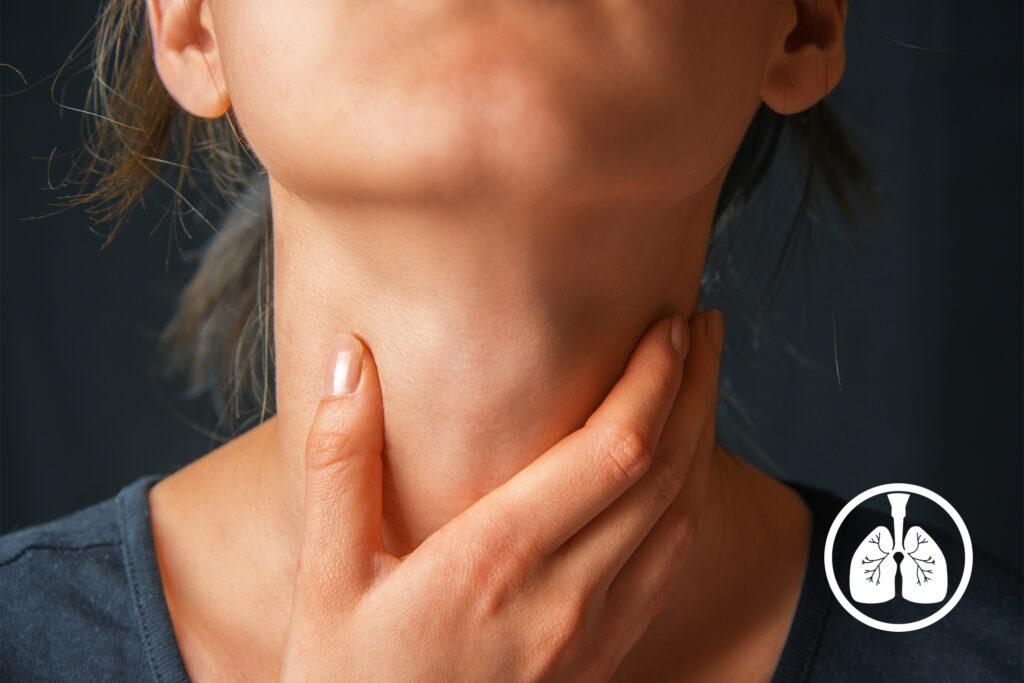
Shutterstock.com
Quiz Summary
0 of 15 Questions completed
Questions:
Information
You have already completed the quiz before. Hence you can not start it again.
Quiz is loading...
You must sign in or sign up to start the quiz.
You must first complete the following:
Results
Results
0 of 15 Questions answered correctly
Your time:
Time has elapsed
You have reached 0 of 0 point(s), (0)
Earned Point(s): 0 of 0, (0)
0 Essay(s) Pending (Possible Point(s): 0)
Categories
- Not categorized 0%
- 1
- 2
- 3
- 4
- 5
- 6
- 7
- 8
- 9
- 10
- 11
- 12
- 13
- 14
- 15
- Current
- Review
- Answered
- Correct
- Incorrect
- Question 1 of 15
1. Question
Which of the following are red flag symptoms that should be referred to a GP?
CorrectIncorrect - Question 2 of 15
2. Question
Match the following treatment options with their characteristics.
Sort elements
- reduces sneezing, rhinorrhoea and itching nose, palate and eyes
- takes several days to reach full effectiveness
- can be used as a short-term adjunct if nasal congestion is severe
- offered following referral to a specialist if initial treatment fails
- Oral antihistamine
- Nasal corticosteroid
- Nasal decongestant
- Oral corticosteroids
CorrectIncorrect - Question 3 of 15
3. Question
Which of the following questions can be used to indicate possible cancer?
CorrectIncorrect - Question 4 of 15
4. Question
Which of the following symptoms of a urinary tract infection require differential diagnoses before initiation of antibiotics?
CorrectIncorrect - Question 5 of 15
5. Question
Which of the follow scenarios should result in an urgent GP referral?
CorrectIncorrect - Question 6 of 15
6. Question
Which form of impetigo is pictured in the image above?
CorrectIncorrect - Question 7 of 15
7. Question
Fill in the blanks.
Although usually a self- disease, serious complications leading to life-threatening situations may occur. In addition, acute rhinosinusitis is one of the most common reasons for prescriptions; therefore, ensuring the condition is correctly identified is essential to prevent .
CorrectIncorrect - Question 8 of 15
8. Question
Order the following headache types in order of most to least common.
- Migraine
- Trigeminal autonomic cephalalgia
- Tension-type headache
View:
CorrectIncorrect - Question 9 of 15
9. Question
Which analgesic should be avoided in the presence of rectal bleeding?
CorrectIncorrect - Question 10 of 15
10. Question
Motion sickness is rare in which age group?
CorrectIncorrect - Question 11 of 15
11. Question
Which of the following patient groups is chloramphenicol contraindicated in?
CorrectIncorrect - Question 12 of 15
12. Question
Match the stool type with the correct description.
Sort elements
- Separate, hard lumps
- Lumpy and sausage like
- Sausage shape with cracks
- Like a smooth, soft sausage or snake
- Soft blobs with clear-cut edges
- Type 1
- Type 2
- Type 3
- Type 4
- Type 5
CorrectIncorrect - Question 13 of 15
13. Question
Match the presentation with the correct definition.
Sort elements
- Thoracic rash
- Papules
- Macules
- A
- B
- C
CorrectIncorrect - Question 14 of 15
14. Question
Fill in the blanks.
Locally administered antifungals offer the advantage of reduced exposure, which results in fewer adverse drug reactions or . The British National Formulary lists two options: nystatin and . However, the -times-per-day administration makes patient adherence for the requisite 7–14 days challenging.
CorrectIncorrect - Question 15 of 15
15. Question
Which scale can be used to describe skin according to its reaction to sun exposure?
CorrectIncorrect
This question is from ‘Case based learning: sore throat’. Please refer to the original article if you would like to know more.
Hay fever
The first steps in the management of hay fever should be avoidance, with further treatment options to be considered depending on severity of symptoms. Expand question 2 to test your knowledge.
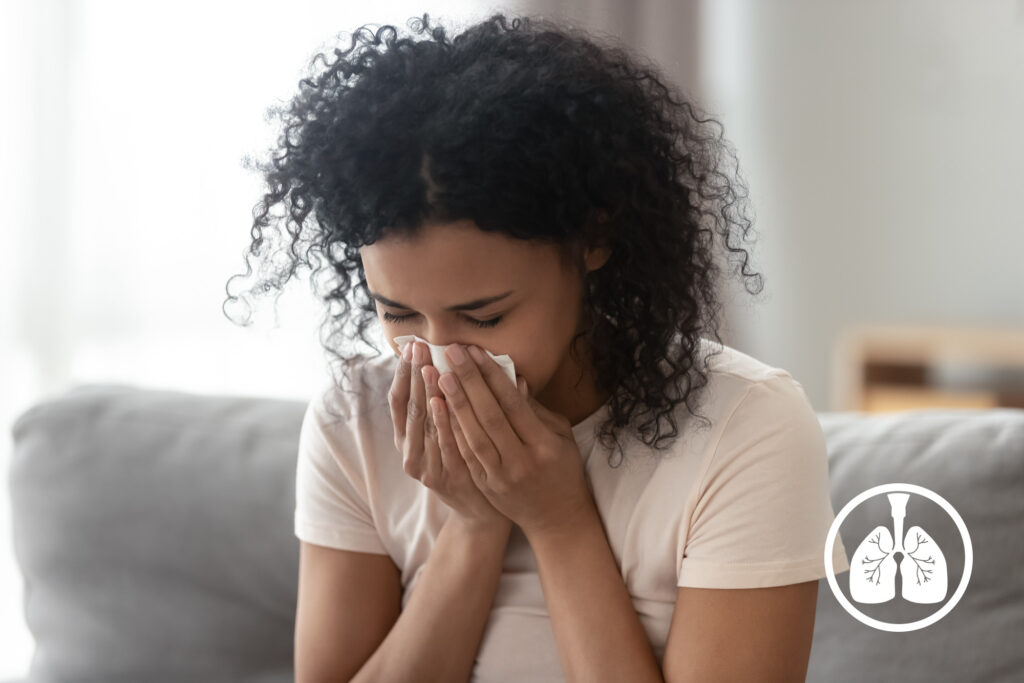
Shutterstock.com
Quiz Summary
0 of 15 Questions completed
Questions:
Information
You have already completed the quiz before. Hence you can not start it again.
Quiz is loading...
You must sign in or sign up to start the quiz.
You must first complete the following:
Results
Results
0 of 15 Questions answered correctly
Your time:
Time has elapsed
You have reached 0 of 0 point(s), (0)
Earned Point(s): 0 of 0, (0)
0 Essay(s) Pending (Possible Point(s): 0)
Categories
- Not categorized 0%
- 1
- 2
- 3
- 4
- 5
- 6
- 7
- 8
- 9
- 10
- 11
- 12
- 13
- 14
- 15
- Current
- Review
- Answered
- Correct
- Incorrect
- Question 1 of 15
1. Question
Which of the following are red flag symptoms that should be referred to a GP?
CorrectIncorrect - Question 2 of 15
2. Question
Match the following treatment options with their characteristics.
Sort elements
- reduces sneezing, rhinorrhoea and itching nose, palate and eyes
- takes several days to reach full effectiveness
- can be used as a short-term adjunct if nasal congestion is severe
- offered following referral to a specialist if initial treatment fails
- Oral antihistamine
- Nasal corticosteroid
- Nasal decongestant
- Oral corticosteroids
CorrectIncorrect - Question 3 of 15
3. Question
Which of the following questions can be used to indicate possible cancer?
CorrectIncorrect - Question 4 of 15
4. Question
Which of the following symptoms of a urinary tract infection require differential diagnoses before initiation of antibiotics?
CorrectIncorrect - Question 5 of 15
5. Question
Which of the follow scenarios should result in an urgent GP referral?
CorrectIncorrect - Question 6 of 15
6. Question
Which form of impetigo is pictured in the image above?
CorrectIncorrect - Question 7 of 15
7. Question
Fill in the blanks.
Although usually a self- disease, serious complications leading to life-threatening situations may occur. In addition, acute rhinosinusitis is one of the most common reasons for prescriptions; therefore, ensuring the condition is correctly identified is essential to prevent .
CorrectIncorrect - Question 8 of 15
8. Question
Order the following headache types in order of most to least common.
- Migraine
- Trigeminal autonomic cephalalgia
- Tension-type headache
View:
CorrectIncorrect - Question 9 of 15
9. Question
Which analgesic should be avoided in the presence of rectal bleeding?
CorrectIncorrect - Question 10 of 15
10. Question
Motion sickness is rare in which age group?
CorrectIncorrect - Question 11 of 15
11. Question
Which of the following patient groups is chloramphenicol contraindicated in?
CorrectIncorrect - Question 12 of 15
12. Question
Match the stool type with the correct description.
Sort elements
- Separate, hard lumps
- Lumpy and sausage like
- Sausage shape with cracks
- Like a smooth, soft sausage or snake
- Soft blobs with clear-cut edges
- Type 1
- Type 2
- Type 3
- Type 4
- Type 5
CorrectIncorrect - Question 13 of 15
13. Question
Match the presentation with the correct definition.
Sort elements
- Thoracic rash
- Papules
- Macules
- A
- B
- C
CorrectIncorrect - Question 14 of 15
14. Question
Fill in the blanks.
Locally administered antifungals offer the advantage of reduced exposure, which results in fewer adverse drug reactions or . The British National Formulary lists two options: nystatin and . However, the -times-per-day administration makes patient adherence for the requisite 7–14 days challenging.
CorrectIncorrect - Question 15 of 15
15. Question
Which scale can be used to describe skin according to its reaction to sun exposure?
CorrectIncorrect
This question is from ‘Hay fever: OTC management’. Please refer to the original article if you would like to know more.
Mouth ulcers
Mouth ulcers affect a high proportion of the population and can be the result of a range of conditions. Asking basic questions can help provide a good indication about the likely cause and suitable management approaches. Pharmacists should be aware of red flags that may indicate cancer. Expand question 3 to test your knowledge.
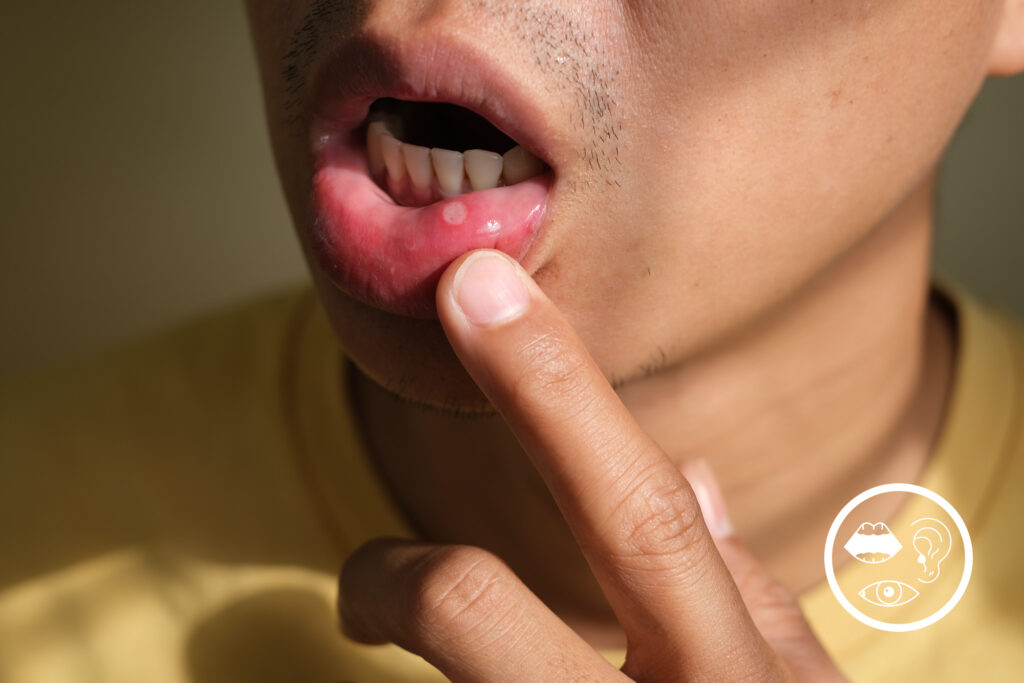
Shutterstock.com
Quiz Summary
0 of 15 Questions completed
Questions:
Information
You have already completed the quiz before. Hence you can not start it again.
Quiz is loading...
You must sign in or sign up to start the quiz.
You must first complete the following:
Results
Results
0 of 15 Questions answered correctly
Your time:
Time has elapsed
You have reached 0 of 0 point(s), (0)
Earned Point(s): 0 of 0, (0)
0 Essay(s) Pending (Possible Point(s): 0)
Categories
- Not categorized 0%
- 1
- 2
- 3
- 4
- 5
- 6
- 7
- 8
- 9
- 10
- 11
- 12
- 13
- 14
- 15
- Current
- Review
- Answered
- Correct
- Incorrect
- Question 1 of 15
1. Question
Which of the following are red flag symptoms that should be referred to a GP?
CorrectIncorrect - Question 2 of 15
2. Question
Match the following treatment options with their characteristics.
Sort elements
- reduces sneezing, rhinorrhoea and itching nose, palate and eyes
- takes several days to reach full effectiveness
- can be used as a short-term adjunct if nasal congestion is severe
- offered following referral to a specialist if initial treatment fails
- Oral antihistamine
- Nasal corticosteroid
- Nasal decongestant
- Oral corticosteroids
CorrectIncorrect - Question 3 of 15
3. Question
Which of the following questions can be used to indicate possible cancer?
CorrectIncorrect - Question 4 of 15
4. Question
Which of the following symptoms of a urinary tract infection require differential diagnoses before initiation of antibiotics?
CorrectIncorrect - Question 5 of 15
5. Question
Which of the follow scenarios should result in an urgent GP referral?
CorrectIncorrect - Question 6 of 15
6. Question
Which form of impetigo is pictured in the image above?
CorrectIncorrect - Question 7 of 15
7. Question
Fill in the blanks.
Although usually a self- disease, serious complications leading to life-threatening situations may occur. In addition, acute rhinosinusitis is one of the most common reasons for prescriptions; therefore, ensuring the condition is correctly identified is essential to prevent .
CorrectIncorrect - Question 8 of 15
8. Question
Order the following headache types in order of most to least common.
- Migraine
- Tension-type headache
- Trigeminal autonomic cephalalgia
View:
CorrectIncorrect - Question 9 of 15
9. Question
Which analgesic should be avoided in the presence of rectal bleeding?
CorrectIncorrect - Question 10 of 15
10. Question
Motion sickness is rare in which age group?
CorrectIncorrect - Question 11 of 15
11. Question
Which of the following patient groups is chloramphenicol contraindicated in?
CorrectIncorrect - Question 12 of 15
12. Question
Match the stool type with the correct description.
Sort elements
- Separate, hard lumps
- Lumpy and sausage like
- Sausage shape with cracks
- Like a smooth, soft sausage or snake
- Soft blobs with clear-cut edges
- Type 1
- Type 2
- Type 3
- Type 4
- Type 5
CorrectIncorrect - Question 13 of 15
13. Question
Match the presentation with the correct definition.
Sort elements
- Thoracic rash
- Papules
- Macules
- A
- B
- C
CorrectIncorrect - Question 14 of 15
14. Question
Fill in the blanks.
Locally administered antifungals offer the advantage of reduced exposure, which results in fewer adverse drug reactions or . The British National Formulary lists two options: nystatin and . However, the -times-per-day administration makes patient adherence for the requisite 7–14 days challenging.
CorrectIncorrect - Question 15 of 15
15. Question
Which scale can be used to describe skin according to its reaction to sun exposure?
CorrectIncorrect
This question is from ‘Oral ulceration: causes and management’. Please refer to the original article if you would like to know more.
Urinary tract infections
Urinary tract infections are major drivers of antibiotic prescribing in primary care. Expand question 4 to test your knowledge.

Shutterstock.com
Quiz Summary
0 of 15 Questions completed
Questions:
Information
You have already completed the quiz before. Hence you can not start it again.
Quiz is loading...
You must sign in or sign up to start the quiz.
You must first complete the following:
Results
Results
0 of 15 Questions answered correctly
Your time:
Time has elapsed
You have reached 0 of 0 point(s), (0)
Earned Point(s): 0 of 0, (0)
0 Essay(s) Pending (Possible Point(s): 0)
Categories
- Not categorized 0%
- 1
- 2
- 3
- 4
- 5
- 6
- 7
- 8
- 9
- 10
- 11
- 12
- 13
- 14
- 15
- Current
- Review
- Answered
- Correct
- Incorrect
- Question 1 of 15
1. Question
Which of the following are red flag symptoms that should be referred to a GP?
CorrectIncorrect - Question 2 of 15
2. Question
Match the following treatment options with their characteristics.
Sort elements
- reduces sneezing, rhinorrhoea and itching nose, palate and eyes
- takes several days to reach full effectiveness
- can be used as a short-term adjunct if nasal congestion is severe
- offered following referral to a specialist if initial treatment fails
- Oral antihistamine
- Nasal corticosteroid
- Nasal decongestant
- Oral corticosteroids
CorrectIncorrect - Question 3 of 15
3. Question
Which of the following questions can be used to indicate possible cancer?
CorrectIncorrect - Question 4 of 15
4. Question
Which of the following symptoms of a urinary tract infection require differential diagnoses before initiation of antibiotics?
CorrectIncorrect - Question 5 of 15
5. Question
Which of the follow scenarios should result in an urgent GP referral?
CorrectIncorrect - Question 6 of 15
6. Question
Which form of impetigo is pictured in the image above?
CorrectIncorrect - Question 7 of 15
7. Question
Fill in the blanks.
Although usually a self- disease, serious complications leading to life-threatening situations may occur. In addition, acute rhinosinusitis is one of the most common reasons for prescriptions; therefore, ensuring the condition is correctly identified is essential to prevent .
CorrectIncorrect - Question 8 of 15
8. Question
Order the following headache types in order of most to least common.
- Trigeminal autonomic cephalalgia
- Migraine
- Tension-type headache
View:
CorrectIncorrect - Question 9 of 15
9. Question
Which analgesic should be avoided in the presence of rectal bleeding?
CorrectIncorrect - Question 10 of 15
10. Question
Motion sickness is rare in which age group?
CorrectIncorrect - Question 11 of 15
11. Question
Which of the following patient groups is chloramphenicol contraindicated in?
CorrectIncorrect - Question 12 of 15
12. Question
Match the stool type with the correct description.
Sort elements
- Separate, hard lumps
- Lumpy and sausage like
- Sausage shape with cracks
- Like a smooth, soft sausage or snake
- Soft blobs with clear-cut edges
- Type 1
- Type 2
- Type 3
- Type 4
- Type 5
CorrectIncorrect - Question 13 of 15
13. Question
Match the presentation with the correct definition.
Sort elements
- Thoracic rash
- Papules
- Macules
- A
- B
- C
CorrectIncorrect - Question 14 of 15
14. Question
Fill in the blanks.
Locally administered antifungals offer the advantage of reduced exposure, which results in fewer adverse drug reactions or . The British National Formulary lists two options: nystatin and . However, the -times-per-day administration makes patient adherence for the requisite 7–14 days challenging.
CorrectIncorrect - Question 15 of 15
15. Question
Which scale can be used to describe skin according to its reaction to sun exposure?
CorrectIncorrect
This question is from ‘Urinary tract infection in adults: diagnosis, management and prevention’. Please refer to the original article if you would like to know more.
Ear conditions
Community pharmacists can provide management advice on a variety of ear conditions. Expand question 5 to test your knowledge.
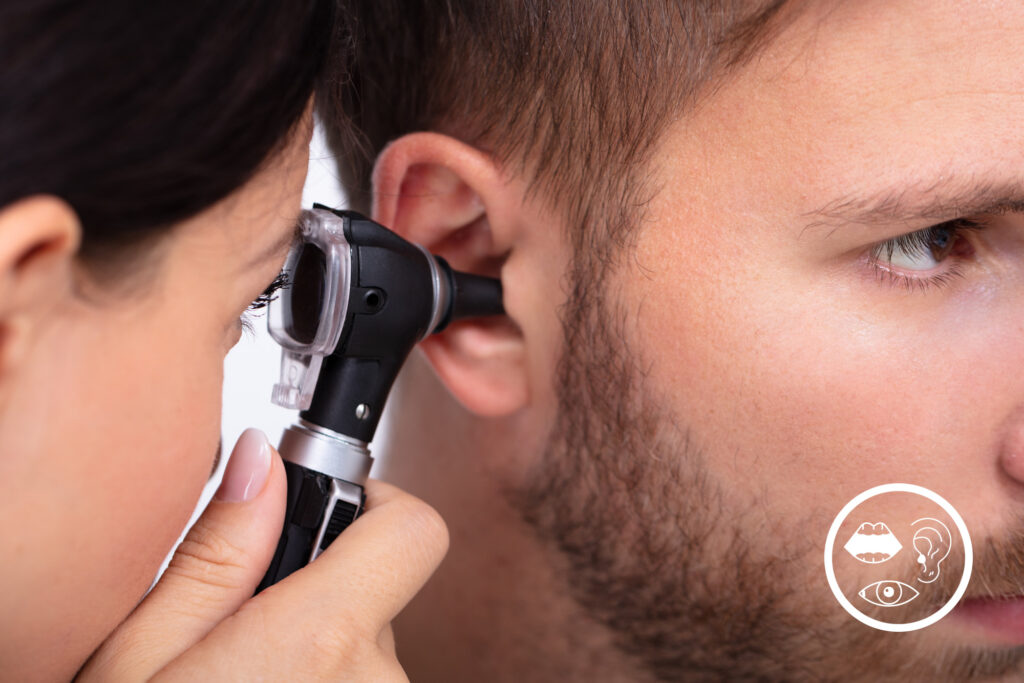
Shutterstock.com
Quiz Summary
0 of 15 Questions completed
Questions:
Information
You have already completed the quiz before. Hence you can not start it again.
Quiz is loading...
You must sign in or sign up to start the quiz.
You must first complete the following:
Results
Results
0 of 15 Questions answered correctly
Your time:
Time has elapsed
You have reached 0 of 0 point(s), (0)
Earned Point(s): 0 of 0, (0)
0 Essay(s) Pending (Possible Point(s): 0)
Categories
- Not categorized 0%
- 1
- 2
- 3
- 4
- 5
- 6
- 7
- 8
- 9
- 10
- 11
- 12
- 13
- 14
- 15
- Current
- Review
- Answered
- Correct
- Incorrect
- Question 1 of 15
1. Question
Which of the following are red flag symptoms that should be referred to a GP?
CorrectIncorrect - Question 2 of 15
2. Question
Match the following treatment options with their characteristics.
Sort elements
- reduces sneezing, rhinorrhoea and itching nose, palate and eyes
- takes several days to reach full effectiveness
- can be used as a short-term adjunct if nasal congestion is severe
- offered following referral to a specialist if initial treatment fails
- Oral antihistamine
- Nasal corticosteroid
- Nasal decongestant
- Oral corticosteroids
CorrectIncorrect - Question 3 of 15
3. Question
Which of the following questions can be used to indicate possible cancer?
CorrectIncorrect - Question 4 of 15
4. Question
Which of the following symptoms of a urinary tract infection require differential diagnoses before initiation of antibiotics?
CorrectIncorrect - Question 5 of 15
5. Question
Which of the follow scenarios should result in an urgent GP referral?
CorrectIncorrect - Question 6 of 15
6. Question
Which form of impetigo is pictured in the image above?
CorrectIncorrect - Question 7 of 15
7. Question
Fill in the blanks.
Although usually a self- disease, serious complications leading to life-threatening situations may occur. In addition, acute rhinosinusitis is one of the most common reasons for prescriptions; therefore, ensuring the condition is correctly identified is essential to prevent .
CorrectIncorrect - Question 8 of 15
8. Question
Order the following headache types in order of most to least common.
- Trigeminal autonomic cephalalgia
- Migraine
- Tension-type headache
View:
CorrectIncorrect - Question 9 of 15
9. Question
Which analgesic should be avoided in the presence of rectal bleeding?
CorrectIncorrect - Question 10 of 15
10. Question
Motion sickness is rare in which age group?
CorrectIncorrect - Question 11 of 15
11. Question
Which of the following patient groups is chloramphenicol contraindicated in?
CorrectIncorrect - Question 12 of 15
12. Question
Match the stool type with the correct description.
Sort elements
- Separate, hard lumps
- Lumpy and sausage like
- Sausage shape with cracks
- Like a smooth, soft sausage or snake
- Soft blobs with clear-cut edges
- Type 1
- Type 2
- Type 3
- Type 4
- Type 5
CorrectIncorrect - Question 13 of 15
13. Question
Match the presentation with the correct definition.
Sort elements
- Thoracic rash
- Papules
- Macules
- A
- B
- C
CorrectIncorrect - Question 14 of 15
14. Question
Fill in the blanks.
Locally administered antifungals offer the advantage of reduced exposure, which results in fewer adverse drug reactions or . The British National Formulary lists two options: nystatin and . However, the -times-per-day administration makes patient adherence for the requisite 7–14 days challenging.
CorrectIncorrect - Question 15 of 15
15. Question
Which scale can be used to describe skin according to its reaction to sun exposure?
CorrectIncorrect
This question is from ‘Managing ear problems: hearing loss and tinnitus’. Please refer to the original article if you would like to know more.
Impetigo
Two forms of impetigo exist: non-bullous (the most common type) and bullous. Expand question 6 to test your knowledge.
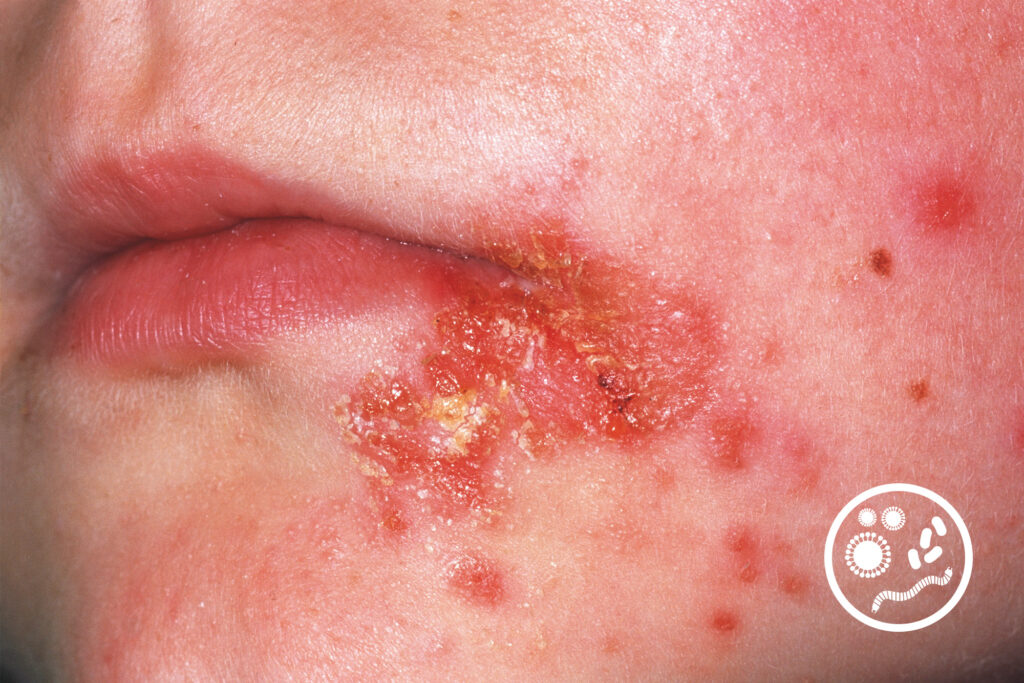
Science Photo Library
Quiz Summary
0 of 15 Questions completed
Questions:
Information
You have already completed the quiz before. Hence you can not start it again.
Quiz is loading...
You must sign in or sign up to start the quiz.
You must first complete the following:
Results
Results
0 of 15 Questions answered correctly
Your time:
Time has elapsed
You have reached 0 of 0 point(s), (0)
Earned Point(s): 0 of 0, (0)
0 Essay(s) Pending (Possible Point(s): 0)
Categories
- Not categorized 0%
- 1
- 2
- 3
- 4
- 5
- 6
- 7
- 8
- 9
- 10
- 11
- 12
- 13
- 14
- 15
- Current
- Review
- Answered
- Correct
- Incorrect
- Question 1 of 15
1. Question
Which of the following are red flag symptoms that should be referred to a GP?
CorrectIncorrect - Question 2 of 15
2. Question
Match the following treatment options with their characteristics.
Sort elements
- reduces sneezing, rhinorrhoea and itching nose, palate and eyes
- takes several days to reach full effectiveness
- can be used as a short-term adjunct if nasal congestion is severe
- offered following referral to a specialist if initial treatment fails
- Oral antihistamine
- Nasal corticosteroid
- Nasal decongestant
- Oral corticosteroids
CorrectIncorrect - Question 3 of 15
3. Question
Which of the following questions can be used to indicate possible cancer?
CorrectIncorrect - Question 4 of 15
4. Question
Which of the following symptoms of a urinary tract infection require differential diagnoses before initiation of antibiotics?
CorrectIncorrect - Question 5 of 15
5. Question
Which of the follow scenarios should result in an urgent GP referral?
CorrectIncorrect - Question 6 of 15
6. Question
Which form of impetigo is pictured in the image above?
CorrectIncorrect - Question 7 of 15
7. Question
Fill in the blanks.
Although usually a self- disease, serious complications leading to life-threatening situations may occur. In addition, acute rhinosinusitis is one of the most common reasons for prescriptions; therefore, ensuring the condition is correctly identified is essential to prevent .
CorrectIncorrect - Question 8 of 15
8. Question
Order the following headache types in order of most to least common.
- Trigeminal autonomic cephalalgia
- Tension-type headache
- Migraine
View:
CorrectIncorrect - Question 9 of 15
9. Question
Which analgesic should be avoided in the presence of rectal bleeding?
CorrectIncorrect - Question 10 of 15
10. Question
Motion sickness is rare in which age group?
CorrectIncorrect - Question 11 of 15
11. Question
Which of the following patient groups is chloramphenicol contraindicated in?
CorrectIncorrect - Question 12 of 15
12. Question
Match the stool type with the correct description.
Sort elements
- Separate, hard lumps
- Lumpy and sausage like
- Sausage shape with cracks
- Like a smooth, soft sausage or snake
- Soft blobs with clear-cut edges
- Type 1
- Type 2
- Type 3
- Type 4
- Type 5
CorrectIncorrect - Question 13 of 15
13. Question
Match the presentation with the correct definition.
Sort elements
- Thoracic rash
- Papules
- Macules
- A
- B
- C
CorrectIncorrect - Question 14 of 15
14. Question
Fill in the blanks.
Locally administered antifungals offer the advantage of reduced exposure, which results in fewer adverse drug reactions or . The British National Formulary lists two options: nystatin and . However, the -times-per-day administration makes patient adherence for the requisite 7–14 days challenging.
CorrectIncorrect - Question 15 of 15
15. Question
Which scale can be used to describe skin according to its reaction to sun exposure?
CorrectIncorrect
This question is from ‘Case-based learning: impetigo’. Please refer to the original article if you would like to know more.
Acute rhinosinusitis
Acute rhinosinusitis has a one-year prevalence of 6–15% and often occurs after a viral common cold or flu. Expand question 7 to test your knowledge.
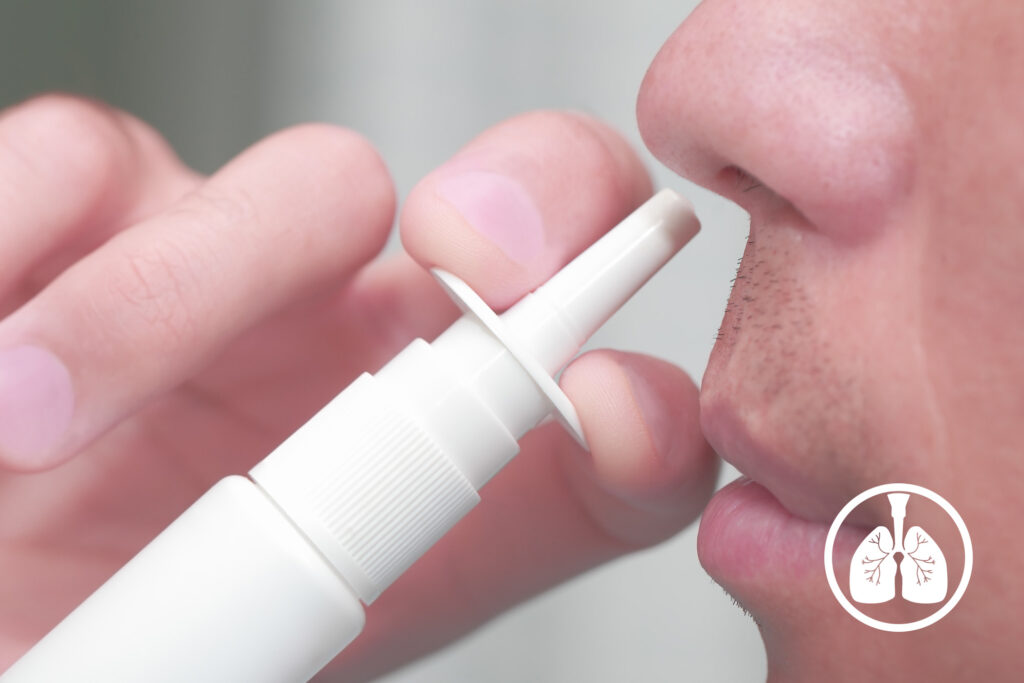
Shutterstock.com
Quiz Summary
0 of 15 Questions completed
Questions:
Information
You have already completed the quiz before. Hence you can not start it again.
Quiz is loading...
You must sign in or sign up to start the quiz.
You must first complete the following:
Results
Results
0 of 15 Questions answered correctly
Your time:
Time has elapsed
You have reached 0 of 0 point(s), (0)
Earned Point(s): 0 of 0, (0)
0 Essay(s) Pending (Possible Point(s): 0)
Categories
- Not categorized 0%
- 1
- 2
- 3
- 4
- 5
- 6
- 7
- 8
- 9
- 10
- 11
- 12
- 13
- 14
- 15
- Current
- Review
- Answered
- Correct
- Incorrect
- Question 1 of 15
1. Question
Which of the following are red flag symptoms that should be referred to a GP?
CorrectIncorrect - Question 2 of 15
2. Question
Match the following treatment options with their characteristics.
Sort elements
- reduces sneezing, rhinorrhoea and itching nose, palate and eyes
- takes several days to reach full effectiveness
- can be used as a short-term adjunct if nasal congestion is severe
- offered following referral to a specialist if initial treatment fails
- Oral antihistamine
- Nasal corticosteroid
- Nasal decongestant
- Oral corticosteroids
CorrectIncorrect - Question 3 of 15
3. Question
Which of the following questions can be used to indicate possible cancer?
CorrectIncorrect - Question 4 of 15
4. Question
Which of the following symptoms of a urinary tract infection require differential diagnoses before initiation of antibiotics?
CorrectIncorrect - Question 5 of 15
5. Question
Which of the follow scenarios should result in an urgent GP referral?
CorrectIncorrect - Question 6 of 15
6. Question
Which form of impetigo is pictured in the image above?
CorrectIncorrect - Question 7 of 15
7. Question
Fill in the blanks.
Although usually a self- disease, serious complications leading to life-threatening situations may occur. In addition, acute rhinosinusitis is one of the most common reasons for prescriptions; therefore, ensuring the condition is correctly identified is essential to prevent .
CorrectIncorrect - Question 8 of 15
8. Question
Order the following headache types in order of most to least common.
- Tension-type headache
- Trigeminal autonomic cephalalgia
- Migraine
View:
CorrectIncorrect - Question 9 of 15
9. Question
Which analgesic should be avoided in the presence of rectal bleeding?
CorrectIncorrect - Question 10 of 15
10. Question
Motion sickness is rare in which age group?
CorrectIncorrect - Question 11 of 15
11. Question
Which of the following patient groups is chloramphenicol contraindicated in?
CorrectIncorrect - Question 12 of 15
12. Question
Match the stool type with the correct description.
Sort elements
- Separate, hard lumps
- Lumpy and sausage like
- Sausage shape with cracks
- Like a smooth, soft sausage or snake
- Soft blobs with clear-cut edges
- Type 1
- Type 2
- Type 3
- Type 4
- Type 5
CorrectIncorrect - Question 13 of 15
13. Question
Match the presentation with the correct definition.
Sort elements
- Thoracic rash
- Papules
- Macules
- A
- B
- C
CorrectIncorrect - Question 14 of 15
14. Question
Fill in the blanks.
Locally administered antifungals offer the advantage of reduced exposure, which results in fewer adverse drug reactions or . The British National Formulary lists two options: nystatin and . However, the -times-per-day administration makes patient adherence for the requisite 7–14 days challenging.
CorrectIncorrect - Question 15 of 15
15. Question
Which scale can be used to describe skin according to its reaction to sun exposure?
CorrectIncorrect
This question is from ‘Rhinosinusitis: symptoms, diagnosis and management in community pharmacy‘. Please refer to the original article if you would like to know more.
Headache
Migraines, tension-type headaches and trigeminal autonomic cephalalgias are types of primary headache, and account for most headache presentations. Expand question 8 to test your knowledge.

Shutterstock.com
Quiz Summary
0 of 15 Questions completed
Questions:
Information
You have already completed the quiz before. Hence you can not start it again.
Quiz is loading...
You must sign in or sign up to start the quiz.
You must first complete the following:
Results
Results
0 of 15 Questions answered correctly
Your time:
Time has elapsed
You have reached 0 of 0 point(s), (0)
Earned Point(s): 0 of 0, (0)
0 Essay(s) Pending (Possible Point(s): 0)
Categories
- Not categorized 0%
- 1
- 2
- 3
- 4
- 5
- 6
- 7
- 8
- 9
- 10
- 11
- 12
- 13
- 14
- 15
- Current
- Review
- Answered
- Correct
- Incorrect
- Question 1 of 15
1. Question
Which of the following are red flag symptoms that should be referred to a GP?
CorrectIncorrect - Question 2 of 15
2. Question
Match the following treatment options with their characteristics.
Sort elements
- reduces sneezing, rhinorrhoea and itching nose, palate and eyes
- takes several days to reach full effectiveness
- can be used as a short-term adjunct if nasal congestion is severe
- offered following referral to a specialist if initial treatment fails
- Oral antihistamine
- Nasal corticosteroid
- Nasal decongestant
- Oral corticosteroids
CorrectIncorrect - Question 3 of 15
3. Question
Which of the following questions can be used to indicate possible cancer?
CorrectIncorrect - Question 4 of 15
4. Question
Which of the following symptoms of a urinary tract infection require differential diagnoses before initiation of antibiotics?
CorrectIncorrect - Question 5 of 15
5. Question
Which of the follow scenarios should result in an urgent GP referral?
CorrectIncorrect - Question 6 of 15
6. Question
Which form of impetigo is pictured in the image above?
CorrectIncorrect - Question 7 of 15
7. Question
Fill in the blanks.
Although usually a self- disease, serious complications leading to life-threatening situations may occur. In addition, acute rhinosinusitis is one of the most common reasons for prescriptions; therefore, ensuring the condition is correctly identified is essential to prevent .
CorrectIncorrect - Question 8 of 15
8. Question
Order the following headache types in order of most to least common.
- Migraine
- Tension-type headache
- Trigeminal autonomic cephalalgia
View:
CorrectIncorrect - Question 9 of 15
9. Question
Which analgesic should be avoided in the presence of rectal bleeding?
CorrectIncorrect - Question 10 of 15
10. Question
Motion sickness is rare in which age group?
CorrectIncorrect - Question 11 of 15
11. Question
Which of the following patient groups is chloramphenicol contraindicated in?
CorrectIncorrect - Question 12 of 15
12. Question
Match the stool type with the correct description.
Sort elements
- Separate, hard lumps
- Lumpy and sausage like
- Sausage shape with cracks
- Like a smooth, soft sausage or snake
- Soft blobs with clear-cut edges
- Type 1
- Type 2
- Type 3
- Type 4
- Type 5
CorrectIncorrect - Question 13 of 15
13. Question
Match the presentation with the correct definition.
Sort elements
- Thoracic rash
- Papules
- Macules
- A
- B
- C
CorrectIncorrect - Question 14 of 15
14. Question
Fill in the blanks.
Locally administered antifungals offer the advantage of reduced exposure, which results in fewer adverse drug reactions or . The British National Formulary lists two options: nystatin and . However, the -times-per-day administration makes patient adherence for the requisite 7–14 days challenging.
CorrectIncorrect - Question 15 of 15
15. Question
Which scale can be used to describe skin according to its reaction to sun exposure?
CorrectIncorrect
This question is from ‘Headache: recognition and management‘. Please refer to the original article if you would like to know more.
Haemorrhoids
Simple analgesia may be recommended for pain relief when treating haemorrhoids. Expand question 9 to test your knowledge.
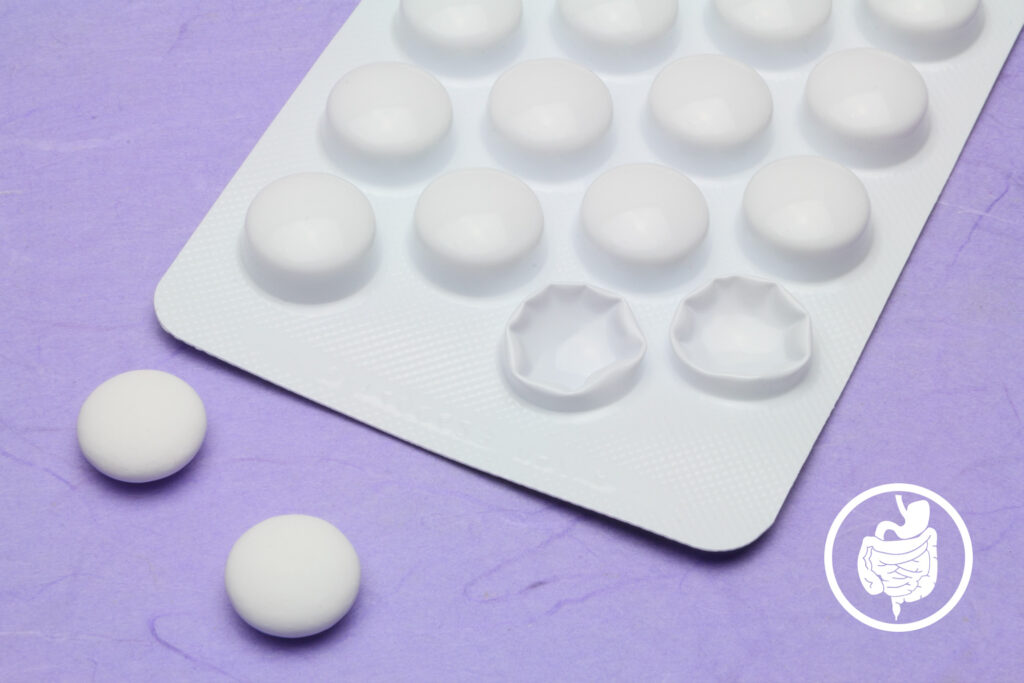
Shutterstock.com
Quiz Summary
0 of 15 Questions completed
Questions:
Information
You have already completed the quiz before. Hence you can not start it again.
Quiz is loading...
You must sign in or sign up to start the quiz.
You must first complete the following:
Results
Results
0 of 15 Questions answered correctly
Your time:
Time has elapsed
You have reached 0 of 0 point(s), (0)
Earned Point(s): 0 of 0, (0)
0 Essay(s) Pending (Possible Point(s): 0)
Categories
- Not categorized 0%
- 1
- 2
- 3
- 4
- 5
- 6
- 7
- 8
- 9
- 10
- 11
- 12
- 13
- 14
- 15
- Current
- Review
- Answered
- Correct
- Incorrect
- Question 1 of 15
1. Question
Which of the following are red flag symptoms that should be referred to a GP?
CorrectIncorrect - Question 2 of 15
2. Question
Match the following treatment options with their characteristics.
Sort elements
- reduces sneezing, rhinorrhoea and itching nose, palate and eyes
- takes several days to reach full effectiveness
- can be used as a short-term adjunct if nasal congestion is severe
- offered following referral to a specialist if initial treatment fails
- Oral antihistamine
- Nasal corticosteroid
- Nasal decongestant
- Oral corticosteroids
CorrectIncorrect - Question 3 of 15
3. Question
Which of the following questions can be used to indicate possible cancer?
CorrectIncorrect - Question 4 of 15
4. Question
Which of the following symptoms of a urinary tract infection require differential diagnoses before initiation of antibiotics?
CorrectIncorrect - Question 5 of 15
5. Question
Which of the follow scenarios should result in an urgent GP referral?
CorrectIncorrect - Question 6 of 15
6. Question
Which form of impetigo is pictured in the image above?
CorrectIncorrect - Question 7 of 15
7. Question
Fill in the blanks.
Although usually a self- disease, serious complications leading to life-threatening situations may occur. In addition, acute rhinosinusitis is one of the most common reasons for prescriptions; therefore, ensuring the condition is correctly identified is essential to prevent .
CorrectIncorrect - Question 8 of 15
8. Question
Order the following headache types in order of most to least common.
- Trigeminal autonomic cephalalgia
- Tension-type headache
- Migraine
View:
CorrectIncorrect - Question 9 of 15
9. Question
Which analgesic should be avoided in the presence of rectal bleeding?
CorrectIncorrect - Question 10 of 15
10. Question
Motion sickness is rare in which age group?
CorrectIncorrect - Question 11 of 15
11. Question
Which of the following patient groups is chloramphenicol contraindicated in?
CorrectIncorrect - Question 12 of 15
12. Question
Match the stool type with the correct description.
Sort elements
- Separate, hard lumps
- Lumpy and sausage like
- Sausage shape with cracks
- Like a smooth, soft sausage or snake
- Soft blobs with clear-cut edges
- Type 1
- Type 2
- Type 3
- Type 4
- Type 5
CorrectIncorrect - Question 13 of 15
13. Question
Match the presentation with the correct definition.
Sort elements
- Thoracic rash
- Papules
- Macules
- A
- B
- C
CorrectIncorrect - Question 14 of 15
14. Question
Fill in the blanks.
Locally administered antifungals offer the advantage of reduced exposure, which results in fewer adverse drug reactions or . The British National Formulary lists two options: nystatin and . However, the -times-per-day administration makes patient adherence for the requisite 7–14 days challenging.
CorrectIncorrect - Question 15 of 15
15. Question
Which scale can be used to describe skin according to its reaction to sun exposure?
CorrectIncorrect
This question is from ‘Case-based learning: haemorrhoids‘. Please refer to the original article if you would like to know more.
Motion sickness
The incidence of motion sickness varies greatly, depending on the magnitude of the stimulus and the susceptibility of the individual. Expand question 10 to test your knowledge.

Shutterstock.com
Quiz Summary
0 of 15 Questions completed
Questions:
Information
You have already completed the quiz before. Hence you can not start it again.
Quiz is loading...
You must sign in or sign up to start the quiz.
You must first complete the following:
Results
Results
0 of 15 Questions answered correctly
Your time:
Time has elapsed
You have reached 0 of 0 point(s), (0)
Earned Point(s): 0 of 0, (0)
0 Essay(s) Pending (Possible Point(s): 0)
Categories
- Not categorized 0%
- 1
- 2
- 3
- 4
- 5
- 6
- 7
- 8
- 9
- 10
- 11
- 12
- 13
- 14
- 15
- Current
- Review
- Answered
- Correct
- Incorrect
- Question 1 of 15
1. Question
Which of the following are red flag symptoms that should be referred to a GP?
CorrectIncorrect - Question 2 of 15
2. Question
Match the following treatment options with their characteristics.
Sort elements
- reduces sneezing, rhinorrhoea and itching nose, palate and eyes
- takes several days to reach full effectiveness
- can be used as a short-term adjunct if nasal congestion is severe
- offered following referral to a specialist if initial treatment fails
- Oral antihistamine
- Nasal corticosteroid
- Nasal decongestant
- Oral corticosteroids
CorrectIncorrect - Question 3 of 15
3. Question
Which of the following questions can be used to indicate possible cancer?
CorrectIncorrect - Question 4 of 15
4. Question
Which of the following symptoms of a urinary tract infection require differential diagnoses before initiation of antibiotics?
CorrectIncorrect - Question 5 of 15
5. Question
Which of the follow scenarios should result in an urgent GP referral?
CorrectIncorrect - Question 6 of 15
6. Question
Which form of impetigo is pictured in the image above?
CorrectIncorrect - Question 7 of 15
7. Question
Fill in the blanks.
Although usually a self- disease, serious complications leading to life-threatening situations may occur. In addition, acute rhinosinusitis is one of the most common reasons for prescriptions; therefore, ensuring the condition is correctly identified is essential to prevent .
CorrectIncorrect - Question 8 of 15
8. Question
Order the following headache types in order of most to least common.
- Trigeminal autonomic cephalalgia
- Tension-type headache
- Migraine
View:
CorrectIncorrect - Question 9 of 15
9. Question
Which analgesic should be avoided in the presence of rectal bleeding?
CorrectIncorrect - Question 10 of 15
10. Question
Motion sickness is rare in which age group?
CorrectIncorrect - Question 11 of 15
11. Question
Which of the following patient groups is chloramphenicol contraindicated in?
CorrectIncorrect - Question 12 of 15
12. Question
Match the stool type with the correct description.
Sort elements
- Separate, hard lumps
- Lumpy and sausage like
- Sausage shape with cracks
- Like a smooth, soft sausage or snake
- Soft blobs with clear-cut edges
- Type 1
- Type 2
- Type 3
- Type 4
- Type 5
CorrectIncorrect - Question 13 of 15
13. Question
Match the presentation with the correct definition.
Sort elements
- Thoracic rash
- Papules
- Macules
- A
- B
- C
CorrectIncorrect - Question 14 of 15
14. Question
Fill in the blanks.
Locally administered antifungals offer the advantage of reduced exposure, which results in fewer adverse drug reactions or . The British National Formulary lists two options: nystatin and . However, the -times-per-day administration makes patient adherence for the requisite 7–14 days challenging.
CorrectIncorrect - Question 15 of 15
15. Question
Which scale can be used to describe skin according to its reaction to sun exposure?
CorrectIncorrect
This question is from ‘Motion sickness: causes, prevention and management‘. Please refer to the original article if you would like to know more.
Bacterial conjunctivitis
Chloramphenicol is broad spectrum antibiotic that can be used to treat bacterial conjunctivitis. Expand question 11 to test your knowledge.
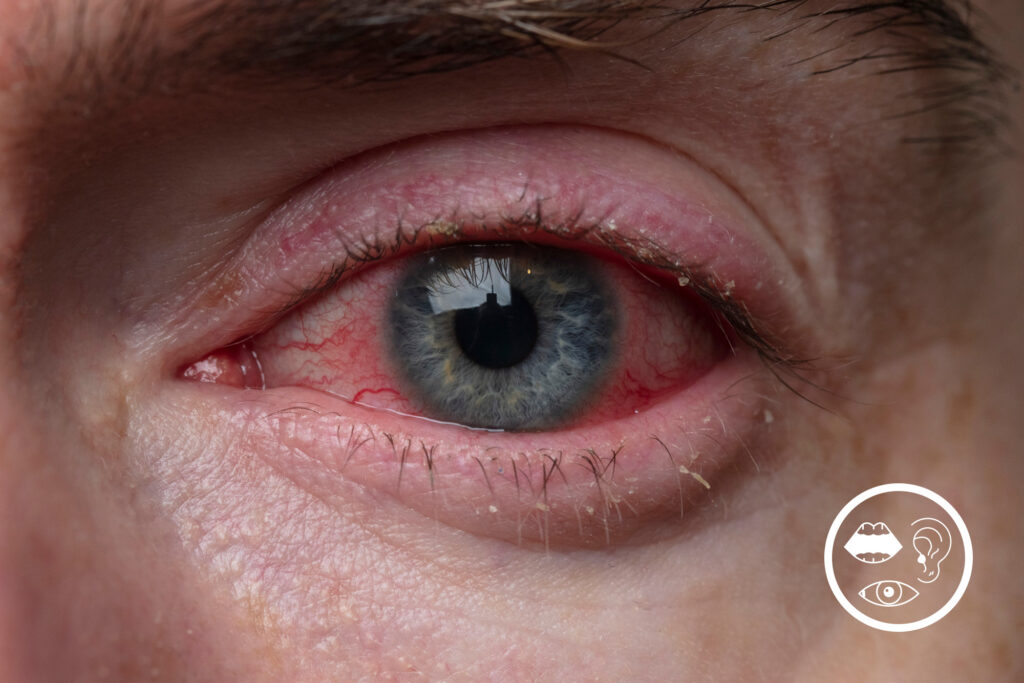
Shutterstock.com
Quiz Summary
0 of 15 Questions completed
Questions:
Information
You have already completed the quiz before. Hence you can not start it again.
Quiz is loading...
You must sign in or sign up to start the quiz.
You must first complete the following:
Results
Results
0 of 15 Questions answered correctly
Your time:
Time has elapsed
You have reached 0 of 0 point(s), (0)
Earned Point(s): 0 of 0, (0)
0 Essay(s) Pending (Possible Point(s): 0)
Categories
- Not categorized 0%
- 1
- 2
- 3
- 4
- 5
- 6
- 7
- 8
- 9
- 10
- 11
- 12
- 13
- 14
- 15
- Current
- Review
- Answered
- Correct
- Incorrect
- Question 1 of 15
1. Question
Which of the following are red flag symptoms that should be referred to a GP?
CorrectIncorrect - Question 2 of 15
2. Question
Match the following treatment options with their characteristics.
Sort elements
- reduces sneezing, rhinorrhoea and itching nose, palate and eyes
- takes several days to reach full effectiveness
- can be used as a short-term adjunct if nasal congestion is severe
- offered following referral to a specialist if initial treatment fails
- Oral antihistamine
- Nasal corticosteroid
- Nasal decongestant
- Oral corticosteroids
CorrectIncorrect - Question 3 of 15
3. Question
Which of the following questions can be used to indicate possible cancer?
CorrectIncorrect - Question 4 of 15
4. Question
Which of the following symptoms of a urinary tract infection require differential diagnoses before initiation of antibiotics?
CorrectIncorrect - Question 5 of 15
5. Question
Which of the follow scenarios should result in an urgent GP referral?
CorrectIncorrect - Question 6 of 15
6. Question
Which form of impetigo is pictured in the image above?
CorrectIncorrect - Question 7 of 15
7. Question
Fill in the blanks.
Although usually a self- disease, serious complications leading to life-threatening situations may occur. In addition, acute rhinosinusitis is one of the most common reasons for prescriptions; therefore, ensuring the condition is correctly identified is essential to prevent .
CorrectIncorrect - Question 8 of 15
8. Question
Order the following headache types in order of most to least common.
- Migraine
- Tension-type headache
- Trigeminal autonomic cephalalgia
View:
CorrectIncorrect - Question 9 of 15
9. Question
Which analgesic should be avoided in the presence of rectal bleeding?
CorrectIncorrect - Question 10 of 15
10. Question
Motion sickness is rare in which age group?
CorrectIncorrect - Question 11 of 15
11. Question
Which of the following patient groups is chloramphenicol contraindicated in?
CorrectIncorrect - Question 12 of 15
12. Question
Match the stool type with the correct description.
Sort elements
- Separate, hard lumps
- Lumpy and sausage like
- Sausage shape with cracks
- Like a smooth, soft sausage or snake
- Soft blobs with clear-cut edges
- Type 1
- Type 2
- Type 3
- Type 4
- Type 5
CorrectIncorrect - Question 13 of 15
13. Question
Match the presentation with the correct definition.
Sort elements
- Thoracic rash
- Papules
- Macules
- A
- B
- C
CorrectIncorrect - Question 14 of 15
14. Question
Fill in the blanks.
Locally administered antifungals offer the advantage of reduced exposure, which results in fewer adverse drug reactions or . The British National Formulary lists two options: nystatin and . However, the -times-per-day administration makes patient adherence for the requisite 7–14 days challenging.
CorrectIncorrect - Question 15 of 15
15. Question
Which scale can be used to describe skin according to its reaction to sun exposure?
CorrectIncorrect
This question is from ‘Bacterial conjunctivitis: diagnosis and management‘. Please refer to the original article if you would like to know more.
Constipation
The Bristol stool chart can be used to determine how constipated a patient is. Expand question 12 to test your knowledge.
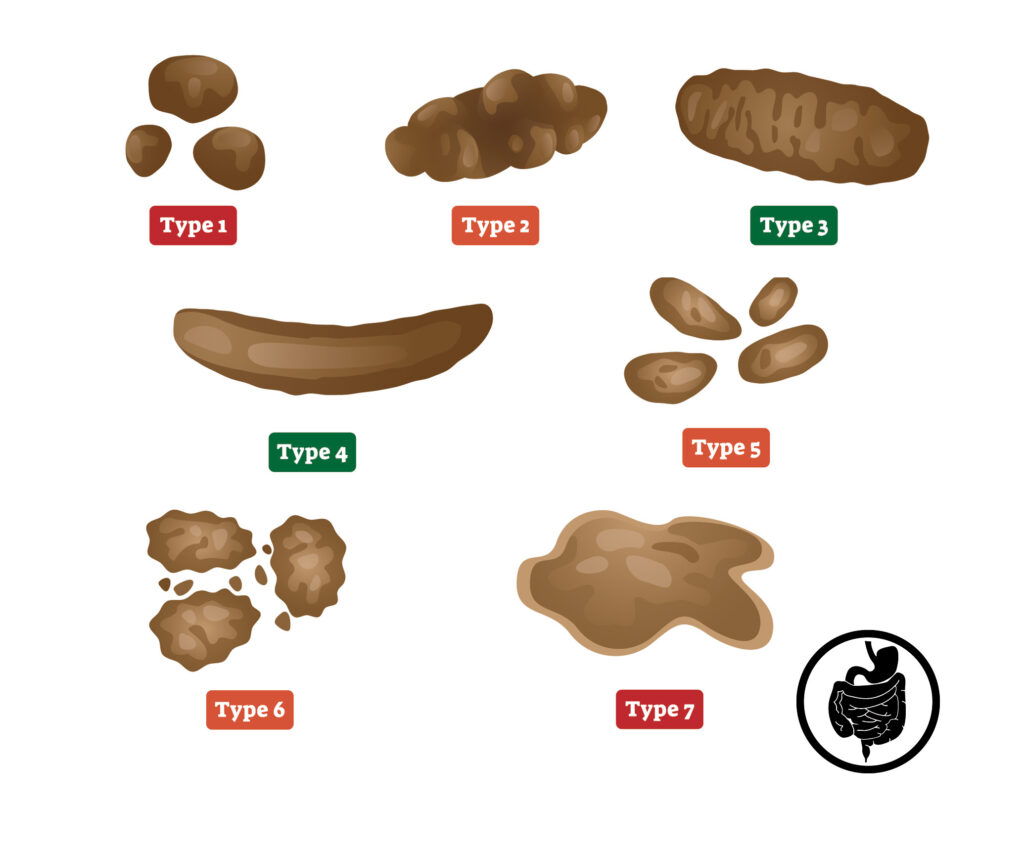
Shutterstock.com
Quiz Summary
0 of 15 Questions completed
Questions:
Information
You have already completed the quiz before. Hence you can not start it again.
Quiz is loading...
You must sign in or sign up to start the quiz.
You must first complete the following:
Results
Results
0 of 15 Questions answered correctly
Your time:
Time has elapsed
You have reached 0 of 0 point(s), (0)
Earned Point(s): 0 of 0, (0)
0 Essay(s) Pending (Possible Point(s): 0)
Categories
- Not categorized 0%
- 1
- 2
- 3
- 4
- 5
- 6
- 7
- 8
- 9
- 10
- 11
- 12
- 13
- 14
- 15
- Current
- Review
- Answered
- Correct
- Incorrect
- Question 1 of 15
1. Question
Which of the following are red flag symptoms that should be referred to a GP?
CorrectIncorrect - Question 2 of 15
2. Question
Match the following treatment options with their characteristics.
Sort elements
- reduces sneezing, rhinorrhoea and itching nose, palate and eyes
- takes several days to reach full effectiveness
- can be used as a short-term adjunct if nasal congestion is severe
- offered following referral to a specialist if initial treatment fails
- Oral antihistamine
- Nasal corticosteroid
- Nasal decongestant
- Oral corticosteroids
CorrectIncorrect - Question 3 of 15
3. Question
Which of the following questions can be used to indicate possible cancer?
CorrectIncorrect - Question 4 of 15
4. Question
Which of the following symptoms of a urinary tract infection require differential diagnoses before initiation of antibiotics?
CorrectIncorrect - Question 5 of 15
5. Question
Which of the follow scenarios should result in an urgent GP referral?
CorrectIncorrect - Question 6 of 15
6. Question
Which form of impetigo is pictured in the image above?
CorrectIncorrect - Question 7 of 15
7. Question
Fill in the blanks.
Although usually a self- disease, serious complications leading to life-threatening situations may occur. In addition, acute rhinosinusitis is one of the most common reasons for prescriptions; therefore, ensuring the condition is correctly identified is essential to prevent .
CorrectIncorrect - Question 8 of 15
8. Question
Order the following headache types in order of most to least common.
- Migraine
- Tension-type headache
- Trigeminal autonomic cephalalgia
View:
CorrectIncorrect - Question 9 of 15
9. Question
Which analgesic should be avoided in the presence of rectal bleeding?
CorrectIncorrect - Question 10 of 15
10. Question
Motion sickness is rare in which age group?
CorrectIncorrect - Question 11 of 15
11. Question
Which of the following patient groups is chloramphenicol contraindicated in?
CorrectIncorrect - Question 12 of 15
12. Question
Match the stool type with the correct description.
Sort elements
- Separate, hard lumps
- Lumpy and sausage like
- Sausage shape with cracks
- Like a smooth, soft sausage or snake
- Soft blobs with clear-cut edges
- Type 1
- Type 2
- Type 3
- Type 4
- Type 5
CorrectIncorrect - Question 13 of 15
13. Question
Match the presentation with the correct definition.
Sort elements
- Thoracic rash
- Papules
- Macules
- A
- B
- C
CorrectIncorrect - Question 14 of 15
14. Question
Fill in the blanks.
Locally administered antifungals offer the advantage of reduced exposure, which results in fewer adverse drug reactions or . The British National Formulary lists two options: nystatin and . However, the -times-per-day administration makes patient adherence for the requisite 7–14 days challenging.
CorrectIncorrect - Question 15 of 15
15. Question
Which scale can be used to describe skin according to its reaction to sun exposure?
CorrectIncorrect
This question is from ‘Case-based learning: constipation in adults‘. Please refer to the original article if you would like to know more.
Shingles
Shingles can present in a variety of locations and have different appearances. Expand question 13 to test your knowledge.

Shutterstock.com
Quiz Summary
0 of 15 Questions completed
Questions:
Information
You have already completed the quiz before. Hence you can not start it again.
Quiz is loading...
You must sign in or sign up to start the quiz.
You must first complete the following:
Results
Results
0 of 15 Questions answered correctly
Your time:
Time has elapsed
You have reached 0 of 0 point(s), (0)
Earned Point(s): 0 of 0, (0)
0 Essay(s) Pending (Possible Point(s): 0)
Categories
- Not categorized 0%
- 1
- 2
- 3
- 4
- 5
- 6
- 7
- 8
- 9
- 10
- 11
- 12
- 13
- 14
- 15
- Current
- Review
- Answered
- Correct
- Incorrect
- Question 1 of 15
1. Question
Which of the following are red flag symptoms that should be referred to a GP?
CorrectIncorrect - Question 2 of 15
2. Question
Match the following treatment options with their characteristics.
Sort elements
- reduces sneezing, rhinorrhoea and itching nose, palate and eyes
- takes several days to reach full effectiveness
- can be used as a short-term adjunct if nasal congestion is severe
- offered following referral to a specialist if initial treatment fails
- Oral antihistamine
- Nasal corticosteroid
- Nasal decongestant
- Oral corticosteroids
CorrectIncorrect - Question 3 of 15
3. Question
Which of the following questions can be used to indicate possible cancer?
CorrectIncorrect - Question 4 of 15
4. Question
Which of the following symptoms of a urinary tract infection require differential diagnoses before initiation of antibiotics?
CorrectIncorrect - Question 5 of 15
5. Question
Which of the follow scenarios should result in an urgent GP referral?
CorrectIncorrect - Question 6 of 15
6. Question
Which form of impetigo is pictured in the image above?
CorrectIncorrect - Question 7 of 15
7. Question
Fill in the blanks.
Although usually a self- disease, serious complications leading to life-threatening situations may occur. In addition, acute rhinosinusitis is one of the most common reasons for prescriptions; therefore, ensuring the condition is correctly identified is essential to prevent .
CorrectIncorrect - Question 8 of 15
8. Question
Order the following headache types in order of most to least common.
- Migraine
- Trigeminal autonomic cephalalgia
- Tension-type headache
View:
CorrectIncorrect - Question 9 of 15
9. Question
Which analgesic should be avoided in the presence of rectal bleeding?
CorrectIncorrect - Question 10 of 15
10. Question
Motion sickness is rare in which age group?
CorrectIncorrect - Question 11 of 15
11. Question
Which of the following patient groups is chloramphenicol contraindicated in?
CorrectIncorrect - Question 12 of 15
12. Question
Match the stool type with the correct description.
Sort elements
- Separate, hard lumps
- Lumpy and sausage like
- Sausage shape with cracks
- Like a smooth, soft sausage or snake
- Soft blobs with clear-cut edges
- Type 1
- Type 2
- Type 3
- Type 4
- Type 5
CorrectIncorrect - Question 13 of 15
13. Question
Match the presentation with the correct definition.
Sort elements
- Thoracic rash
- Papules
- Macules
- A
- B
- C
CorrectIncorrect - Question 14 of 15
14. Question
Fill in the blanks.
Locally administered antifungals offer the advantage of reduced exposure, which results in fewer adverse drug reactions or . The British National Formulary lists two options: nystatin and . However, the -times-per-day administration makes patient adherence for the requisite 7–14 days challenging.
CorrectIncorrect - Question 15 of 15
15. Question
Which scale can be used to describe skin according to its reaction to sun exposure?
CorrectIncorrect
This question is from ‘Case-based learning: shingles‘. Please refer to the original article if you would like to know more.
Oral candidiasis
Traditionally, topical antifungals are the preferred treatment for oral candidiasis. Expand question 14 to test your knowledge.
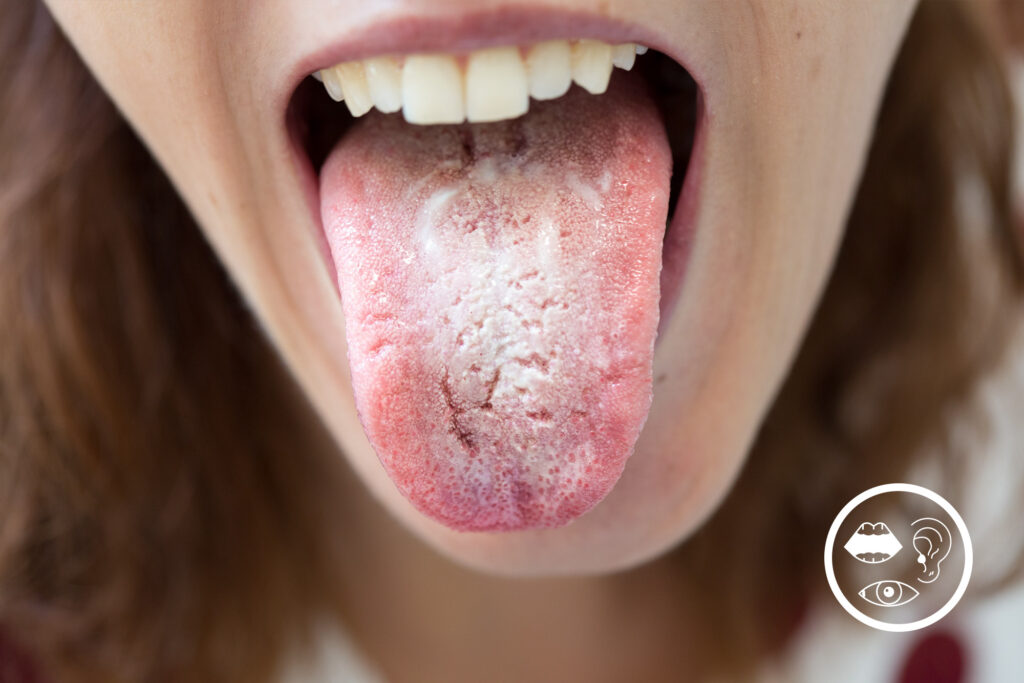
Shutterstock.com
Quiz Summary
0 of 15 Questions completed
Questions:
Information
You have already completed the quiz before. Hence you can not start it again.
Quiz is loading...
You must sign in or sign up to start the quiz.
You must first complete the following:
Results
Results
0 of 15 Questions answered correctly
Your time:
Time has elapsed
You have reached 0 of 0 point(s), (0)
Earned Point(s): 0 of 0, (0)
0 Essay(s) Pending (Possible Point(s): 0)
Categories
- Not categorized 0%
- 1
- 2
- 3
- 4
- 5
- 6
- 7
- 8
- 9
- 10
- 11
- 12
- 13
- 14
- 15
- Current
- Review
- Answered
- Correct
- Incorrect
- Question 1 of 15
1. Question
Which of the following are red flag symptoms that should be referred to a GP?
CorrectIncorrect - Question 2 of 15
2. Question
Match the following treatment options with their characteristics.
Sort elements
- reduces sneezing, rhinorrhoea and itching nose, palate and eyes
- takes several days to reach full effectiveness
- can be used as a short-term adjunct if nasal congestion is severe
- offered following referral to a specialist if initial treatment fails
- Oral antihistamine
- Nasal corticosteroid
- Nasal decongestant
- Oral corticosteroids
CorrectIncorrect - Question 3 of 15
3. Question
Which of the following questions can be used to indicate possible cancer?
CorrectIncorrect - Question 4 of 15
4. Question
Which of the following symptoms of a urinary tract infection require differential diagnoses before initiation of antibiotics?
CorrectIncorrect - Question 5 of 15
5. Question
Which of the follow scenarios should result in an urgent GP referral?
CorrectIncorrect - Question 6 of 15
6. Question
Which form of impetigo is pictured in the image above?
CorrectIncorrect - Question 7 of 15
7. Question
Fill in the blanks.
Although usually a self- disease, serious complications leading to life-threatening situations may occur. In addition, acute rhinosinusitis is one of the most common reasons for prescriptions; therefore, ensuring the condition is correctly identified is essential to prevent .
CorrectIncorrect - Question 8 of 15
8. Question
Order the following headache types in order of most to least common.
- Trigeminal autonomic cephalalgia
- Tension-type headache
- Migraine
View:
CorrectIncorrect - Question 9 of 15
9. Question
Which analgesic should be avoided in the presence of rectal bleeding?
CorrectIncorrect - Question 10 of 15
10. Question
Motion sickness is rare in which age group?
CorrectIncorrect - Question 11 of 15
11. Question
Which of the following patient groups is chloramphenicol contraindicated in?
CorrectIncorrect - Question 12 of 15
12. Question
Match the stool type with the correct description.
Sort elements
- Separate, hard lumps
- Lumpy and sausage like
- Sausage shape with cracks
- Like a smooth, soft sausage or snake
- Soft blobs with clear-cut edges
- Type 1
- Type 2
- Type 3
- Type 4
- Type 5
CorrectIncorrect - Question 13 of 15
13. Question
Match the presentation with the correct definition.
Sort elements
- Thoracic rash
- Papules
- Macules
- A
- B
- C
CorrectIncorrect - Question 14 of 15
14. Question
Fill in the blanks.
Locally administered antifungals offer the advantage of reduced exposure, which results in fewer adverse drug reactions or . The British National Formulary lists two options: nystatin and . However, the -times-per-day administration makes patient adherence for the requisite 7–14 days challenging.
CorrectIncorrect - Question 15 of 15
15. Question
Which scale can be used to describe skin according to its reaction to sun exposure?
CorrectIncorrect
This question is from ‘Oral candidiasis: causes, types and treatment‘. Please refer to the original article if you would like to know more.
Skin conditions
Identifying common skin conditions in skin of colour may be difficult for healthcare professionals owing to the lack of inclusivity and representation in medical textbooks and practical training. Expand question 15 to test your knowledge.
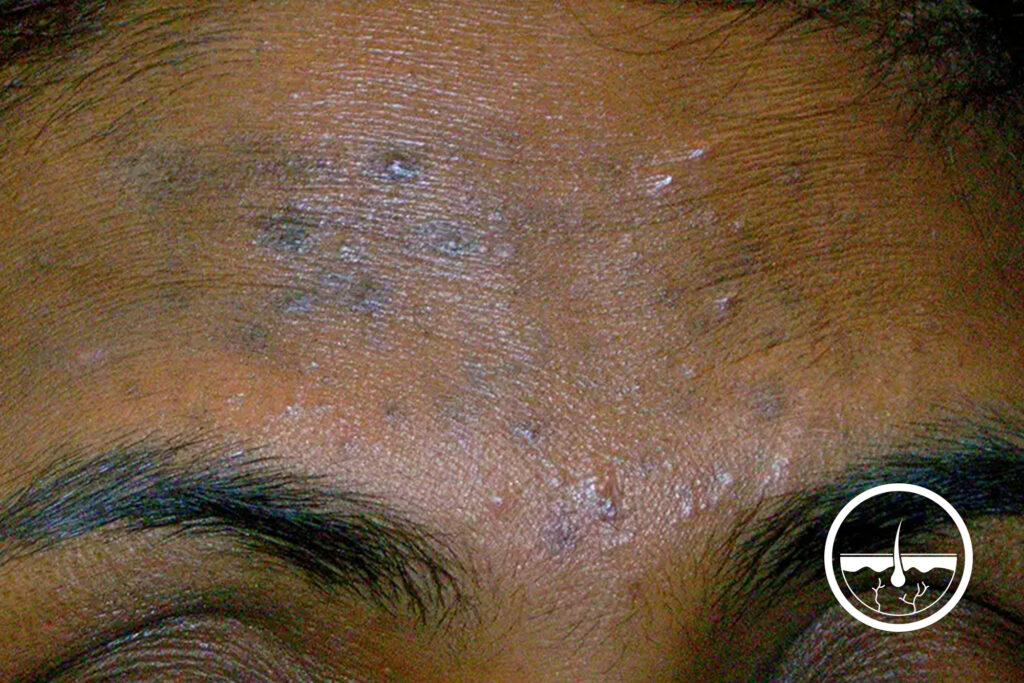
Shutterstock.com
Quiz Summary
0 of 15 Questions completed
Questions:
Information
You have already completed the quiz before. Hence you can not start it again.
Quiz is loading...
You must sign in or sign up to start the quiz.
You must first complete the following:
Results
Results
0 of 15 Questions answered correctly
Your time:
Time has elapsed
You have reached 0 of 0 point(s), (0)
Earned Point(s): 0 of 0, (0)
0 Essay(s) Pending (Possible Point(s): 0)
Categories
- Not categorized 0%
- 1
- 2
- 3
- 4
- 5
- 6
- 7
- 8
- 9
- 10
- 11
- 12
- 13
- 14
- 15
- Current
- Review
- Answered
- Correct
- Incorrect
- Question 1 of 15
1. Question
Which of the following are red flag symptoms that should be referred to a GP?
CorrectIncorrect - Question 2 of 15
2. Question
Match the following treatment options with their characteristics.
Sort elements
- reduces sneezing, rhinorrhoea and itching nose, palate and eyes
- takes several days to reach full effectiveness
- can be used as a short-term adjunct if nasal congestion is severe
- offered following referral to a specialist if initial treatment fails
- Oral antihistamine
- Nasal corticosteroid
- Nasal decongestant
- Oral corticosteroids
CorrectIncorrect - Question 3 of 15
3. Question
Which of the following questions can be used to indicate possible cancer?
CorrectIncorrect - Question 4 of 15
4. Question
Which of the following symptoms of a urinary tract infection require differential diagnoses before initiation of antibiotics?
CorrectIncorrect - Question 5 of 15
5. Question
Which of the follow scenarios should result in an urgent GP referral?
CorrectIncorrect - Question 6 of 15
6. Question
Which form of impetigo is pictured in the image above?
CorrectIncorrect - Question 7 of 15
7. Question
Fill in the blanks.
Although usually a self- disease, serious complications leading to life-threatening situations may occur. In addition, acute rhinosinusitis is one of the most common reasons for prescriptions; therefore, ensuring the condition is correctly identified is essential to prevent .
CorrectIncorrect - Question 8 of 15
8. Question
Order the following headache types in order of most to least common.
- Tension-type headache
- Trigeminal autonomic cephalalgia
- Migraine
View:
CorrectIncorrect - Question 9 of 15
9. Question
Which analgesic should be avoided in the presence of rectal bleeding?
CorrectIncorrect - Question 10 of 15
10. Question
Motion sickness is rare in which age group?
CorrectIncorrect - Question 11 of 15
11. Question
Which of the following patient groups is chloramphenicol contraindicated in?
CorrectIncorrect - Question 12 of 15
12. Question
Match the stool type with the correct description.
Sort elements
- Separate, hard lumps
- Lumpy and sausage like
- Sausage shape with cracks
- Like a smooth, soft sausage or snake
- Soft blobs with clear-cut edges
- Type 1
- Type 2
- Type 3
- Type 4
- Type 5
CorrectIncorrect - Question 13 of 15
13. Question
Match the presentation with the correct definition.
Sort elements
- Thoracic rash
- Papules
- Macules
- A
- B
- C
CorrectIncorrect - Question 14 of 15
14. Question
Fill in the blanks.
Locally administered antifungals offer the advantage of reduced exposure, which results in fewer adverse drug reactions or . The British National Formulary lists two options: nystatin and . However, the -times-per-day administration makes patient adherence for the requisite 7–14 days challenging.
CorrectIncorrect - Question 15 of 15
15. Question
Which scale can be used to describe skin according to its reaction to sun exposure?
CorrectIncorrect
This question is from ‘Recognising common skin conditions in people of colour‘. Please refer to the original article if you would like to know more.
Quiz Summary
0 of 15 Questions completed
Questions:
Information
You have already completed the quiz before. Hence you can not start it again.
Quiz is loading...
You must sign in or sign up to start the quiz.
You must first complete the following:
Results
Results
0 of 15 Questions answered correctly
Your time:
Time has elapsed
You have reached 0 of 0 point(s), (0)
Earned Point(s): 0 of 0, (0)
0 Essay(s) Pending (Possible Point(s): 0)
Categories
- Not categorized 0%
- 1
- 2
- 3
- 4
- 5
- 6
- 7
- 8
- 9
- 10
- 11
- 12
- 13
- 14
- 15
- Current
- Review
- Answered
- Correct
- Incorrect
- Question 1 of 15
1. Question
Which of the following are red flag symptoms that should be referred to a GP?
CorrectIncorrect - Question 2 of 15
2. Question
Match the following treatment options with their characteristics.
Sort elements
- reduces sneezing, rhinorrhoea and itching nose, palate and eyes
- takes several days to reach full effectiveness
- can be used as a short-term adjunct if nasal congestion is severe
- offered following referral to a specialist if initial treatment fails
- Oral antihistamine
- Nasal corticosteroid
- Nasal decongestant
- Oral corticosteroids
CorrectIncorrect - Question 3 of 15
3. Question
Which of the following questions can be used to indicate possible cancer?
CorrectIncorrect - Question 4 of 15
4. Question
Which of the following symptoms of a urinary tract infection require differential diagnoses before initiation of antibiotics?
CorrectIncorrect - Question 5 of 15
5. Question
Which of the follow scenarios should result in an urgent GP referral?
CorrectIncorrect - Question 6 of 15
6. Question
Which form of impetigo is pictured in the image above?
CorrectIncorrect - Question 7 of 15
7. Question
Fill in the blanks.
Although usually a self- disease, serious complications leading to life-threatening situations may occur. In addition, acute rhinosinusitis is one of the most common reasons for prescriptions; therefore, ensuring the condition is correctly identified is essential to prevent .
CorrectIncorrect - Question 8 of 15
8. Question
Order the following headache types in order of most to least common.
- Trigeminal autonomic cephalalgia
- Migraine
- Tension-type headache
View:
CorrectIncorrect - Question 9 of 15
9. Question
Which analgesic should be avoided in the presence of rectal bleeding?
CorrectIncorrect - Question 10 of 15
10. Question
Motion sickness is rare in which age group?
CorrectIncorrect - Question 11 of 15
11. Question
Which of the following patient groups is chloramphenicol contraindicated in?
CorrectIncorrect - Question 12 of 15
12. Question
Match the stool type with the correct description.
Sort elements
- Separate, hard lumps
- Lumpy and sausage like
- Sausage shape with cracks
- Like a smooth, soft sausage or snake
- Soft blobs with clear-cut edges
- Type 1
- Type 2
- Type 3
- Type 4
- Type 5
CorrectIncorrect - Question 13 of 15
13. Question
Match the presentation with the correct definition.
Sort elements
- Thoracic rash
- Papules
- Macules
- A
- B
- C
CorrectIncorrect - Question 14 of 15
14. Question
Fill in the blanks.
Locally administered antifungals offer the advantage of reduced exposure, which results in fewer adverse drug reactions or . The British National Formulary lists two options: nystatin and . However, the -times-per-day administration makes patient adherence for the requisite 7–14 days challenging.
CorrectIncorrect - Question 15 of 15
15. Question
Which scale can be used to describe skin according to its reaction to sun exposure?
CorrectIncorrect
- Citation
- The Pharmaceutical Journal, PJ, June 2023, Vol 310, No 7974;310(7974)::DOI:10.1211/PJ.2023.1.188768
2 comments
Cancel reply
You must be logged in to post a comment.

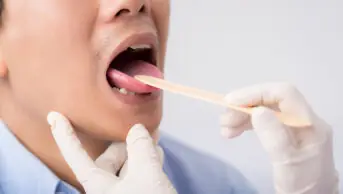

I am grateful for your feedback but, of course, in practice one finds there are more than one or two arguably valid option which this quiz setter(s) does not seem to appreciate. I disagree with some of the answers you deemed correct or incorrect!
Thanks very much for your comment. I am the senior editor for research and learning at the PJ. The questions were derived from expert authored articles but I will be glad to look at the specific answers that you disagreed with. Would you be able to send me an email at Alex.Clabburn@rpharms.com so we can continue the conversation? Many thanks.